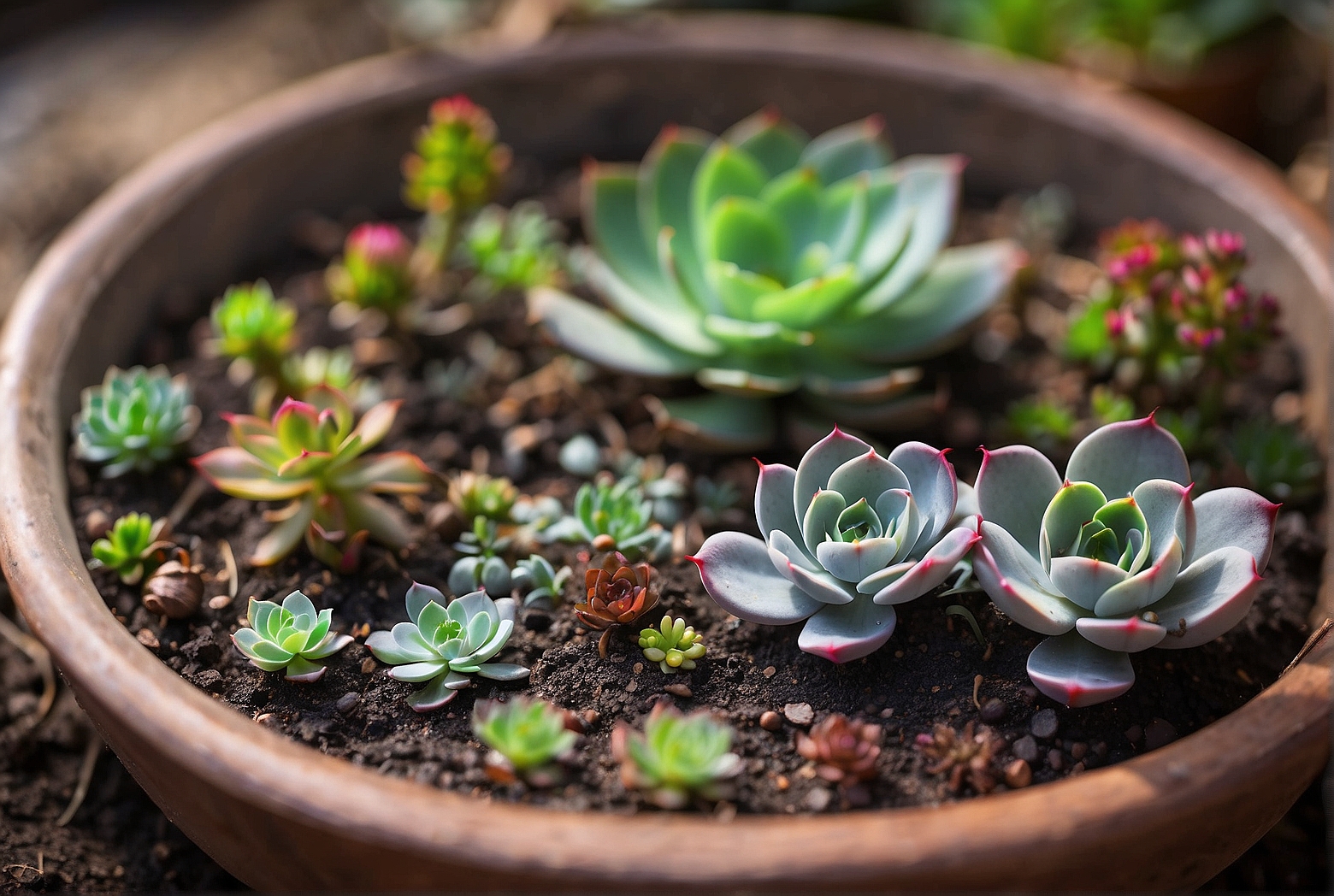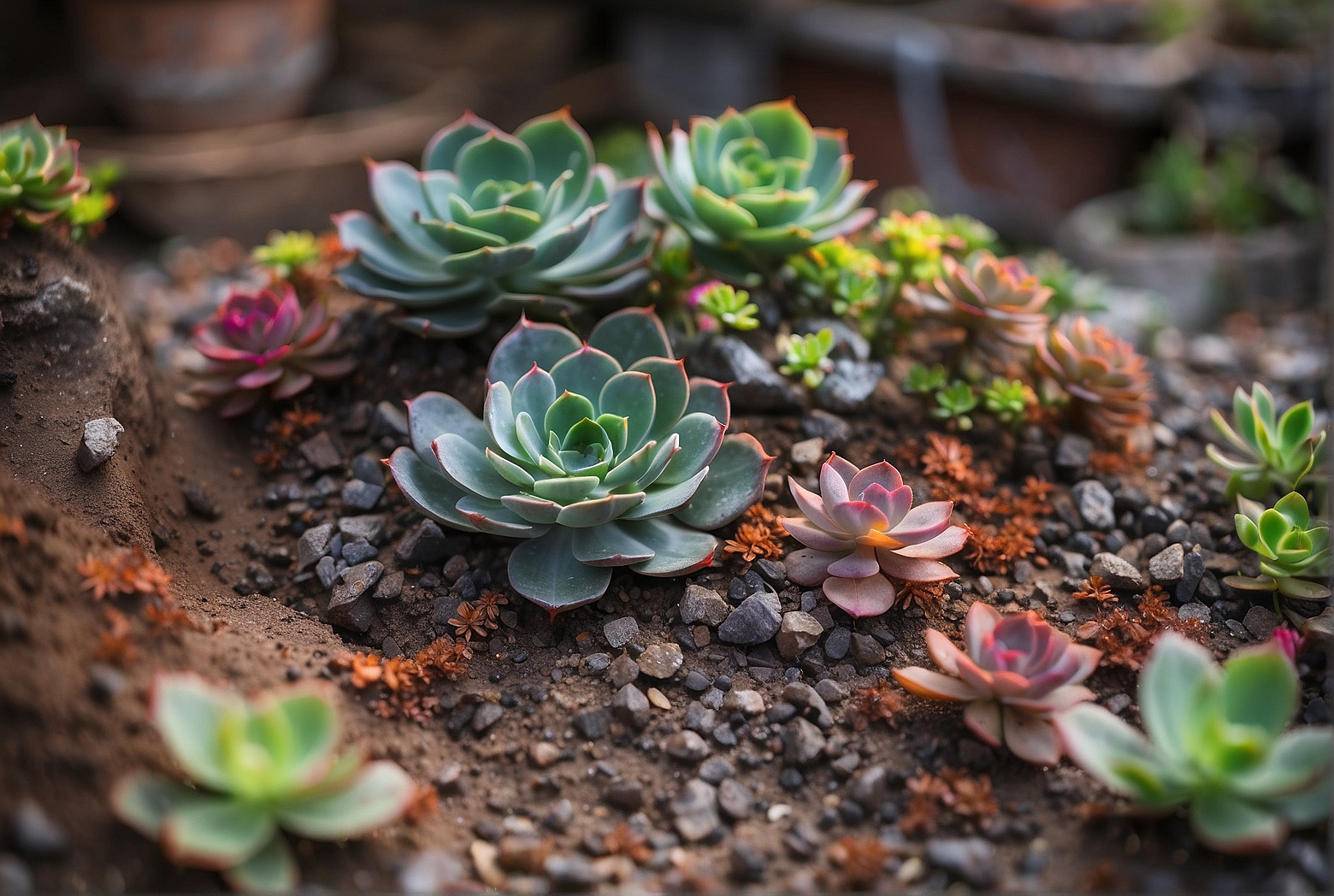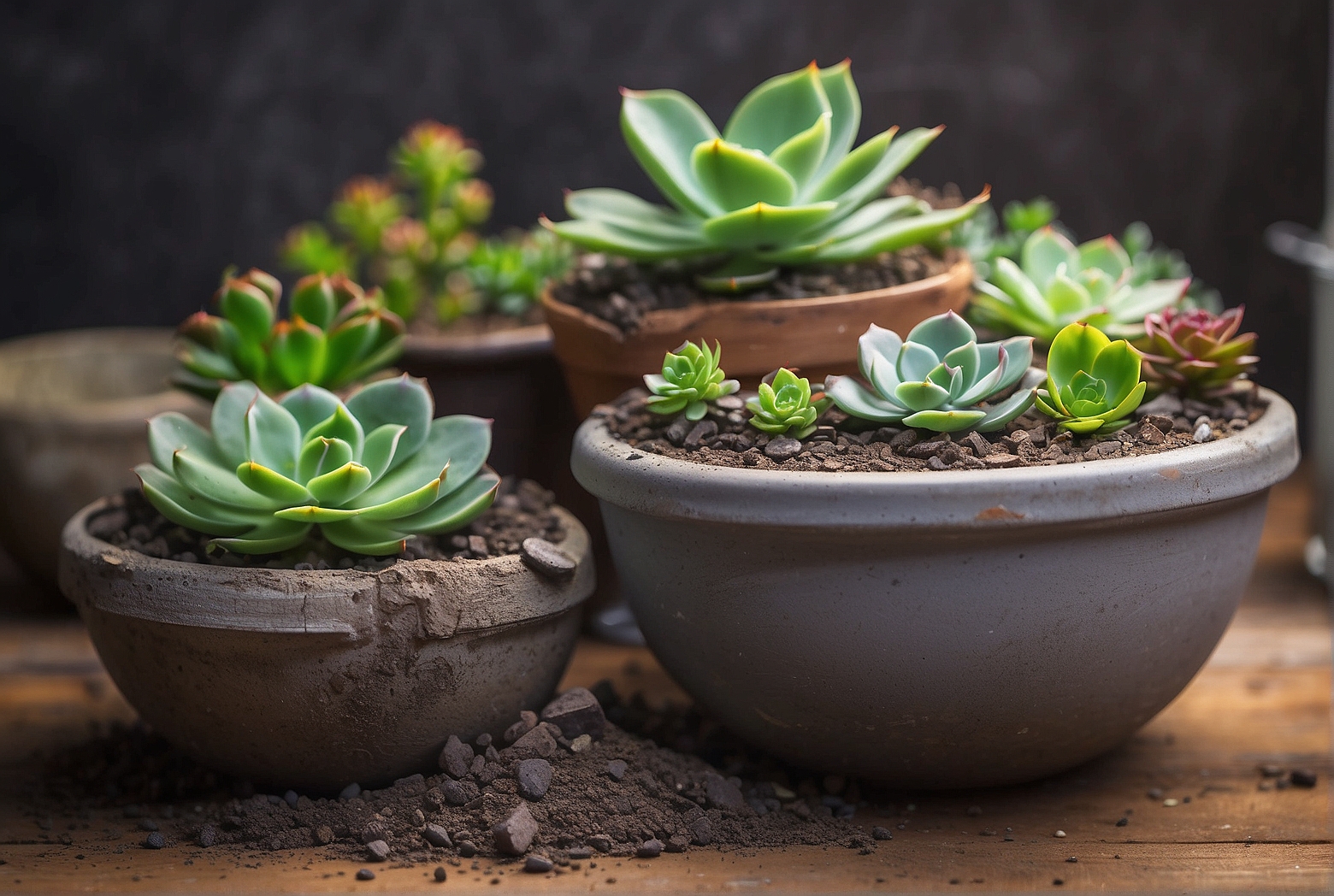Last Updated on March 27, 2024 by Cinthia
Succulents have experienced a surge in popularity in recent years, and it’s easy to see why. These plants grow well in all types of weather, and require little knowledge or experience on the part of the gardener taking care of them. This is because succulents developed in arid regions with little natural rainfall and are used to growing deep roots and saving moisture in their thick, fleshy leaves.
But even though succulents are simple to care for, some knowledge is still necessary when it comes to crafting the right environment for these beautiful plants. One of the most important things to get right is using the proper soil. After careful review, these are some of the best soils for succulents based on their nutritional content, porosity, and space for root growth.
What to Know When Picking a Soil for Succulents
Succulents grow in a broad variety of soils, but there are some characteristics that are essential when picking the best option. These are typically a high level of drainability, some minor amounts of nutrients like potassium, and an overall lightweight. When shopping online or in gardening centers, it’s common to see several different styles of soil marketed for succulents, ranging from bare rocks to enriched options.
But what will grow the healthiest succulent?
In general, it is going to depend on the hardiness rating of your succulent of choice. Plants accustomed to growing in the barren desert or freezing tundra can survive on rocks, while options that have become used to temperate zones typically require extra nutrition. For first time gardeners, the best soil will be one that already has some nutrients but still allows for excellent drainage.
We’ve identified some of the most ideal potting and general soil mixes for succulents that combine all of the necessary factors to grow a healthy plant. Check them out below.
Check Out These Nutritious Options
Hoffman 10404 Organic Cactus and Succulent Soil Mix
The Hoffman 10404 is an exceptionally dark yet nutrient rich soil mix. It was formulated primarily for jungle and desert succulents and cacti, making it excellent for a broad range of plants that have different hardiness levels. Although it contains tons of nitrogen and potassium, it avoids being too dense and still allows for an adequate amount of drainage so the succulents are forced to sit in their own water.
This soil mix contains tons of product in a single bag, usually around 4 qts. This is excellent for someone who has several succulents they want to plant, pot, or prepare for the upcoming months. The Hoffman 10404 is pH balanced and uses ingredients like perlite, sand, limestone, reed sedge peat, and Canadian sphagnum peat moss.

PROS
Contains tons of nutrients to promote growth
Adequate drainage for succulents
Easy to use
CONS
Surprisingly dense formula can prevent drainage in pots.

Fat Plants San Diego Premium Organic Succulent Soil
The Fat Plants San Diego succulent soil mix is a 100% organic composition, which means it doesn’t include any synthetic materials created by humans. The presence of nutrient dense soil means succulents get the nutrition they need, making this a great mix for succulent seeds that are just starting to grow. Although somewhat dense, the Fat Plants soil does have adequate drainage and looks great.
PROS
Enough nutrition for young succulents
Nutrient rich soil
No synthetic ingredients
CONS
No air exposure for developing roots
Somewhat dense
The Next Gardener Organic Succulent and Cactus Soil Mix
This is a pre-mixed, coarse blend designed to foster the growth of succulents and cactuses of all ages. The soil possesses an overall pH of 5.5, making it great for these arid, desert plants. A combination of organic and inorganic ingredients also ensures there is adequate drainage for the roots so water can seep out of a pot or down deep in the garden to save the roots from being overwhelmed.
The Next Gardener mix is ideal for some of the most popular succulents, including jade plants and donkey tails. It is made and formulated in Denmark and includes ingredients like organic double-sifted compost mulch, calcined clay, vermiculite, and FRIT.
PROS
Good mix of organic and inorganic elements
Easy to use and apply
Neutral pH to foster growth
Adequate drainage in pots and regular gardens
CONS
Some peat moss is included, which can smother young plants.
Superfly Bonsai Succulent & Cactus Soil Mix
The Superfly Bonsai Succulent & Cactus Soil Mix is the ideal option for someone growing a hardy succulent variety because it is made from pre-mixed, nonporous materials. The full list includes 25% Hard Japanese Akadama, 25% USA Pumice, 25% New Zealand Pine Bark, and 25% Haydite. These components are designed to promote water retention and drainage, ensuring a succulent absorbs excess moisture through the roots and doesn’t wind up sitting in water.
This soil mix has the additional benefit of ensuring the roots of succulents have access to fresh air, which again promotes growth and helps the succulent dig deeper into the soil. The combination of the different components also creates a beautiful, colorful mix that blends natural beauty with practicality, making it a great option for decorative pots that hold living succulents.
PROS
Promotes water retention and drainage
Doesn’t weigh down or smother plants
Easy to use
CONS
Not the best for starting seeds
Conclusion
Out of all of these options, the absolute best one is the Superfly Bonsai Succulent & Cactus Soil Mix, although The Next Gardener Organic Succulent and Cactus Soil Mix is a close second. The Superfly mix pays attention to drainage and understands that most succulents will get adequate nutrition from sunlight and minute traces of elements in the ground. It instead focuses on keeping the roots healthy and doesn’t smother succulents, making it great for just about every variety out there.
FAQs
How do I prepare my soil for succulents?
One of the most important things to know when growing succulents is how to prepare your soil. Succulents need well-draining soil that is low in moisture, so it's important to add plenty of grit and sand to your soil mix.
If your soil is not well-draining, you can improve it by adding a layer of gravel or stones to the bottom of your pot. You can also create a succulent container garden by using a container with a drainage hole at the bottom. Another option is to grow your succulents in succulent soil mix, which is a specially-formulated soil that is designed for succulents.
One of the main benefits of growing succulents in succulent soil mix is that it helps to retain moisture and nutrients, which can be important in areas with hot, dry climates.
So, if you are interested in growing succulents, be sure to learn about the different types of soil that are best for succulents and how to prepare your soil for succulents.
What is the best fertilizer for succulents?
The best kind of fertilizer that can be used on succulent plants is an organic succulent fertilizer. An organic succulent fertilizer is made of natural materials that are broken down into a form that the succulent plant can easily absorb. The three main ingredients in an organic succulent fertilizer are manure, bone meal, and kelp.
Succulents do not need a lot of fertilizer to grow well, so using a weak succulent fertilizer once a month during the growing season is all that is needed.
Some succulents may need more fertilizer than others. If a succulent plant is not growing well, has yellow leaves, or is not flowering, then it may need more fertilizer. In this case, the succulent can be fertilized with more succulent fertilizer or can be dusted with a little powered fertilize r to help it absorb the fertilizer.
When succulents are not flowering, it may mean that they need more water. Check the succulent soil before giving more succulent food; adding succulent food to dry soil will do no good.
What is in cactus potting mix?
Cactus potting mix is a specialized soil mixture that is designed to meet the needs of cacti and other succulents. It is typically made up of a light, sandy soil that helps to promote good drainage, as well as a variety of organic and inorganic materials that help to provide the plants with all the nutrients they need. The ideal cactus potting mix is composed of roughly equal parts sand, perlite, and peat moss.
Cactus potting mixture should be used in place of regular potting soil when repotting the plant or starting new seedlings. While it can be difficult to find ready-made cactus soil at garden centers, it is simple to make your own at home.
You should add one part sand to two parts either pea gravel or perlite for succulents that prefer a more alkaline environment. If you have a succulent that prefers a more acidic environment, then you should add one part sand to three parts peat moss.
If you are starting new succulent seedlings, you can mix the soil 50/50 with perlite and vermiculite. This will provide good drainage and help to keep the soil temperature consistent.
Is there a special soil for succulents?
Succulents do prefer soil that is well-draining and relatively sandy. If your garden soil is heavy and clay-like, you may need to amend it with some sand or perlite to create a more succulent-friendly environment. You can also purchase succulent soil specifically made for these plants.
Regardless of the soil you use, it's important to make sure that your succulents receive plenty of water. They should be watered thoroughly whenever the top inch or so of soil feels dry to the touch. Succulents need succulent soil to survive, so if you're growing succulents in regular garden soil, be sure to water them regularly.
If your succulents are growing in containers or freshly planted beds, they will also benefit from succulent fertilizer. The best time to feed succulents is during active growth in the spring and summer.
Tony Manhart is a passionate gardener who has been tending to gardens for over 20 years. He takes pride in creating beautiful outdoor spaces with plants, trees, and shrubs that can thrive in any environment. He loves to share his knowledge with others and has taught classes on gardening basics and advanced techniques. He is committed to sustainability, using natural and organic methods to create and maintain gardens. He also works with local organizations to create green spaces for communities. When he’s not gardening, Tony enjoys hiking, reading, and spending time with his family.


